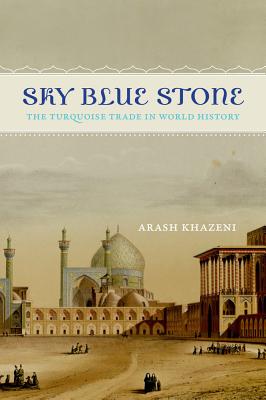

 University of California Press
University of California Press
Sky Blue Stone: The Turquoise Trade in World History Volume 20


Key Metrics
- Arash Khazeni
- University of California Press
- Paperback
- 9780520282551
- 8.9 X 5.9 X 0.6 inches
- 0.7 pounds
- Business & Economics > Commerce
- English
 Secure Transaction
Secure TransactionBook Description
In the material culture and imperial regalia of early modern Islamic tributary empires moving from the steppe to the sown, turquoise was a sacred stone and a potent symbol of power projected in vivid color displays. From the empires of Islamic Eurasia, the turquoise trade reached Europe, where the stone was collected as an exotic object from the East. The Eurasian trade lasted into the nineteenth century, when the oldest mines in Iran collapsed and lost Aztec mines in the Americas reopened, unearthing more accessible sources of the stone to rival the Persian blue.
Sky Blue Stone recounts the origins, trade, and circulation of a natural object in the context of the history of Islamic Eurasia and global encounters between empire and nature.
Author Bio
Arash Khazeni earned a Ph.D. in history from Yale University in 2006 and joined Pomona College in 2010 following fellowships at the Huntington Library and UCLA. His research is focused on the imperial and environmental histories of the modern Middle East, South Asia, and the Indian Ocean, including the monographs Tribes and Empire on the Margins of Nineteenth-Century Iran (University of Washington Press, 2010), recipient of the Middle East Studies Association Houshang Pourshariati Book Award, Sky Blue Stone:
The Turquoise Trade in World History (University of California Press, 2014), and The City and the Wilderness: Indo-Persian Encounters in Southeast Asia (University of California Press, 2020).
Trained as a historian of the Islamic Middle East, primarily Iran and Afghanistan, during the sixteenth through nineteenth centuries, Khazeni’s research veers to the margins and the places in between empires, world regions, and nations. This emphasis on the margins and borderland spaces began in a Marxist vein, as a context for exploring the histories of societies “from below” in the path of E.P. Thompson, and a way of retracing the pasts of “people without history.”
This method has also found kinship in aspects of the field of environmental history and become associated with certain forms of interconnected global history, in particular a wave of new studies of the Indo-Persian world and inter-Asian contacts and exchanges.
At Pomona College, Khazeni teaches courses on the Middle East, South Asia, and the Indian Ocean in the Department of History and serves as the coordinator of Middle Eastern Studies.
Source: Pomona College - Department of History
Videos


Community reviews
Write a ReviewNo Community reviews